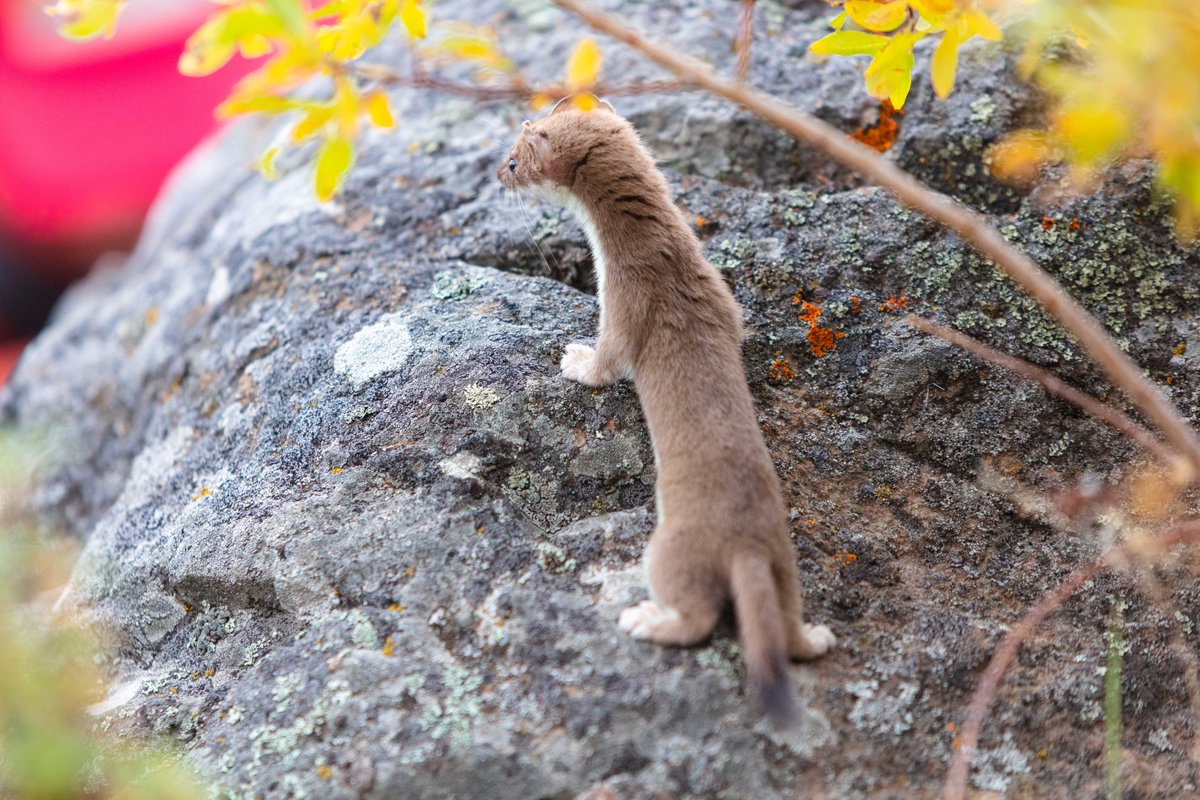It’s not just from memory of years past—even young born that spring, who have never seen a winter, know to start readying. For many animals the answer lies in a part of the brain known as the pineal gland.
The pineal gland, which receives light information from the retina, produces melatonin only when it’s dark. As nights grow longer during the fall, melatonin will accumulate in the bloodstream. The increased melatonin levels trigger a series of changes, including the autumn molt.
Most animals have an autumn molt, replacing their fur or feathers before winter. The new coat will usually be thicker and warmer, some animals even double the thickness of their underfur when molting.
For birds the molt results in fresh flight feathers for migration. A few animals, like the short-tailed weasel (pictured above), even change color during the molt, exchanging their brown summer coat for a white winter one!
The molt happens in a set sequence, with side to side symmetry, even though it can appear quite random. Mink, for instance, always molt starting at the tail and ending at their head.
There’s an evolutionary advantage to looking mottled during the fall when the ground may be sparsely covered with snow. During this time, an animal would not want to be pure white or pure brown. Matching the ground, they’ll have a smattering of each.
Autumn is not simply a time of death and decay; look beneath the surface and resilient life is active as ever, undergoing impressive and fascinating changes!

 Read on Twitter
Read on Twitter


